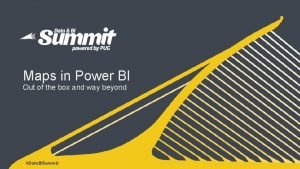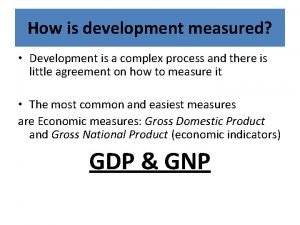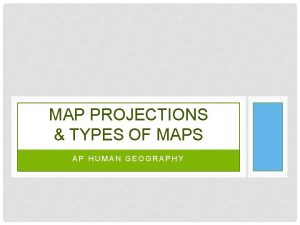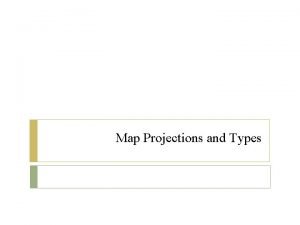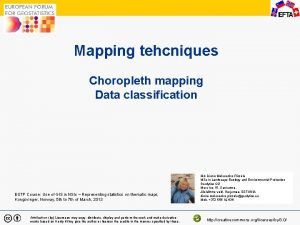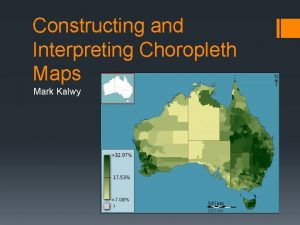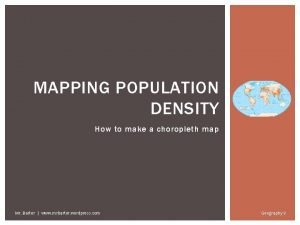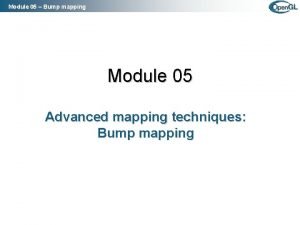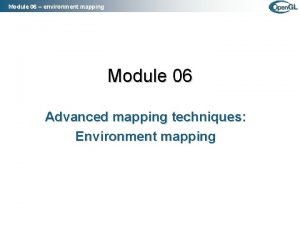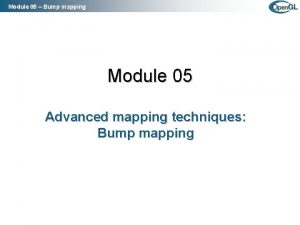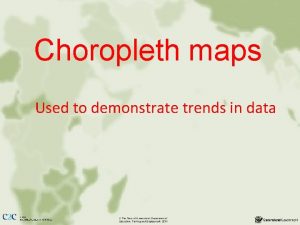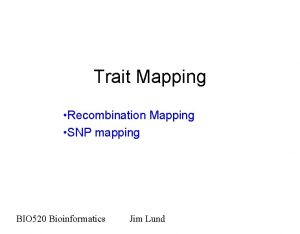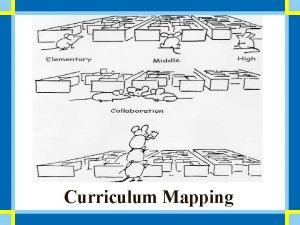Module 5 Choropleth Mapping Data Classification for Choropleth















- Slides: 15

Module 5

Choropleth Mapping

Data Classification for Choropleth Mapping 1. Equal interval 2. Quantiles 3. Standard deviation 4. Natural Breaks (Jencks) 5. Optimal

Data Classification for Choropleth Mapping ESRI site for data classification

Equal Interval

Quantiles

Module 5 How to choose a technique? This can be a difficult question to answer, what worked for one map and data set may not work for another. There a several different statistical techniques that can help to classify data, which will follow shortly. In the meantime, there are several criteria to help you determine which statistical technique will help you to best classify your data: 1. Does method consider how data are distributed along the number line? Some methods are designed for data that might be evenly distributed along the values line; other methods are designed for data that is clustered together at one end of the values scale. 2. Is method easy to understand? Some methods are very complicated which may result in bad data distributions. If the method is easy to understand, others may understand why you chose to use it. 3. Is method easy to compute? The easier to compute, the less likely an error in data classification will result. 4. Is resulting legend easy to understand? Complicated legends can easily confuse map-readers.

Module 5 5. Is method acceptable for ordinal data? Some statistical classification techniques do not handle certain types of data very well. 6. Method encompasses full range of data? This method will ensure that all values are included and reflected equally in the resulting classification. 7. Method reflects logical division of data values? Some classifications do not make logical sense, many times this is a reflection of using the wrong method with the data set. 8. The method results in NO empty classes. 9. The method results in NO overlapping classes. Classes cannot have values that overlap, otherwise data may be double represented.

Quantile Classification

Equal Interval Classification

Jencks Classification

Classifications

Standard Deviation Classification

Standard Deviation Classification

Standard Deviation Classification Height (m) 2 3 3 4 5 5 5 6 6 7 9
 Drilldown choropleth power bi
Drilldown choropleth power bi Aggregation ap human geography
Aggregation ap human geography Choropleth map example ap human geography
Choropleth map example ap human geography Gni
Gni Cartogram vs choropleth
Cartogram vs choropleth Dot maps ap human geography
Dot maps ap human geography Choropleth map
Choropleth map Memory parameters
Memory parameters Forward mapping vs backward mapping
Forward mapping vs backward mapping Terjemahan
Terjemahan C device module module 1
C device module module 1 Concept map on types of rocks
Concept map on types of rocks Fspos
Fspos Novell typiska drag
Novell typiska drag Tack för att ni lyssnade bild
Tack för att ni lyssnade bild Returpilarna
Returpilarna
